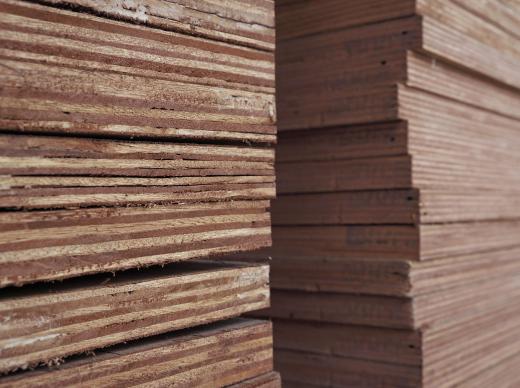Tego film is a type of adhesive used to laminate layers of wood in the process of creating a waterproof plywood. It was first invented and used in Germany in the 1930s, and for a time, the term was used to refer specifically to this product. Over the decades since its introduction, however, the term has come to be used in a more generic sense to refer to any type of dry adhesive film used in this way.
The original Tego film specifically indicated a type of adhesive manufactured in Germany which was developed for manufacturing plywood intended for use in aircraft construction, as conventional adhesives resulted in a product that was unsuitable for this purpose. It consisted of a sheet of paper infused with phenolic resins. The product was was unique and only manufactured by one German company, Goldmand AG. The only factory that manufactured the original Tego film was destroyed during World War II.

Since a sheet of plywood consists of many layers of veneer, many alternating layers of Tego film and wood veneers were stacked together. The stack was then heated and pressed, which bonded the adhesive and the layers of wood veneers, resulting in a strong, waterproof sheet of plywood. Unlike other adhesives used to make plywood, this adhesive was used in a dry form rather than as a liquid, giving plywood constructed this way an advantage in terms of strength, overall structural integrity, and water resistance over other types of plywood.
In 2011, plywood manufactured for use under conditions that require water resistance is often constructed using Tego film. This does not refer to the original Tego film but to any one of a family of dry film adhesives using phenolic resins as a base. Plywood constructed this way is often referred to as Tego film plywood. The term Tego film itself is becoming somewhat archaic and less common with the passage of time but continues to be used colloquially in many parts of the world and even by some manufacturers in their product descriptions and trade literature.
Plywood made using modern versions of this film is manufactured around the world, a large portion of it coming from southeast Asia and Indonesia. This type of plywood is used in a number of ways, both in interior and exterior applications. Plywood made with phenolic resins is found in building construction, vehicle interiors, handles for tools, and many other applications where strength and water resistance are paramount.
